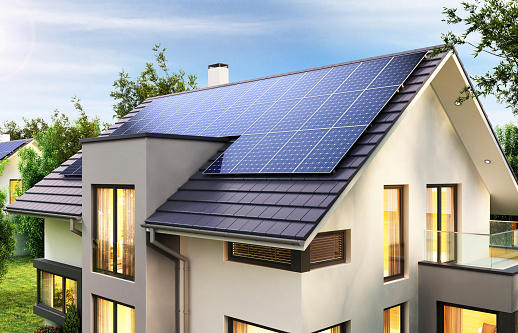
Glossary of Solar Energy and Electrical Terms
Here is a glossary of terms that will help you make sense of the installation and operation of your home solar power system.
This rough guide should assist you before and during installation or simply inform your general solar knowledge. For the final word on solar energy and electrical terminology, components, and procedures, please talk to your preferred electrician or solar installer.
Solar Energy and Electrical Terms:
Amp – Ampere, the SI (International System) unit of electrical current measurement. It is named after inventor André-Marie Ampère.
Array or PV Array – A group of two or more solar panels connected together. Supplies usable solar power by means of photovoltaic (PV) activity.
Grid – The distribution network for electricity. An electrical grid is a network of synchronised power providers and consumers that are connected by transmission and distribution lines (power lines). This is operated by one or more control centres. A power “grid”, colloquially refers to the transmission system for electricity.
Grid-Tie Inverter (GT) – A type of inverter specifically designed to convert direct current (DC) electricity into alternating current (AC) and feed it to an active utility grid. Its applications are converting DC sources such as solar panels or small wind turbines into AC for connection to the electricity grid.
Inverter – A device for changing DC Voltage into AC Voltage required for any grid system.
IP rating – This rating defines the ability of an inverter’s seals to prevent water and dust ingress. The ability of an inverter to last the expected functional lifetime of the product at installation, depends significantly on the quality and location of seals and ventilation.
Kilowatt (kW): – One thousand Watts.
Kilowatt hour (kW hour or kWh) – A unit of energy commonly used in billing by electrical utilities for delivery of energy to consumers. It is a composite unit of energy equal to one kilowatt of power sustained for one hour.
MPPT – Maximum Power Point Tracking. A technique that grid connected inverters use to achieve the most efficient charge rate possible from varying input. Some of them are able to change the higher PV Voltage into a lower System Voltage through a system known as down-converting.
Peak efficiency – the highest level of efficiency any electrical component may achieve.
Photovoltaic (PV)– is a method of converting solar energy into direct current (DC) electricity using semiconducting materials that produce an electric current when exposed to light. Photovoltaic electric solar panels convert sunlight into electricity.
Renewable Energy – Energy that comes from sources that are naturally replenished. For example sunlight, wind, rain, tides, waves and geothermal energy.
Resistance – is an electrical quantity that measures how the device or material reduces the electric current flow through it.
Volt – energy that could be released if electric current is allowed to flow.
Watt – SI unit of electrical power that is used to quantify the rate of energy transfer. It is named after Scottish inventor and mechanical engineer James Watt.
